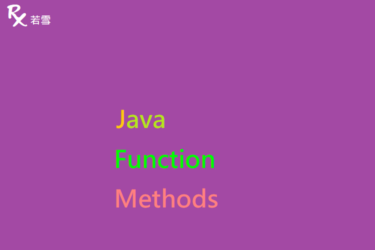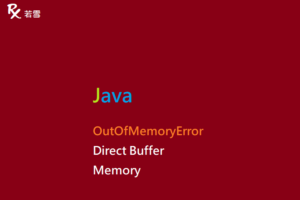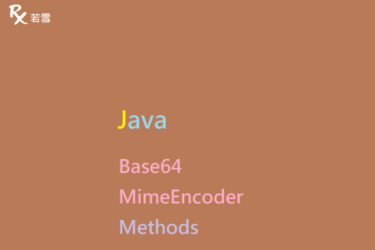Table of Contents
ToggleBiConsumer Functional Interface in Java
可當作其他方法的傳入參數或是引用其他方法為實例,使用 Lambda 語法,傳入 2 個泛型物件參數,無傳回值, Functional Interface BiConsumer 介紹常見的方法引用、方法參數等操作和方法,本篇增加了範例,並透過單元測試來驗證產出結果。
@FunctionalInterface
public interface BiConsumer<T, U> {
void accept(T t, U u);
}檔案目錄
./
+- src
+- test
| +- org
| +- ruoxue
| +- java_147
| +- functional
| +- biconsumer
| +- BiConsumerFunctionalTest.java
單元測試
BiConsumer Functional Interface 提供方法引用、參考等操作 Java BiConsumer Functional Interface 。
Food
BiConsumer Functional Interface 建立 Food 類別,覆寫 equals 、 hashCode ,定義屬性和方法,用來建立一個物件。
@NoArgsConstructor
@Getter
@Setter
@Builder
public static class Food {
private String name;
private double quantity;
private int type;
public Food(String name, double quantity, int type) {
this.name = name;
this.quantity = quantity;
this.type = type;
}
public String toString() {
ToStringBuilder builder = new ToStringBuilder(this, ToStringStyle.JSON_STYLE);
builder.appendSuper(super.toString());
builder.append("name", name);
builder.append("quantity", quantity);
builder.append("type", type);
return builder.toString();
}
public boolean equals(Object object) {
if (!(object instanceof Food)) {
return false;
}
if (this == object) {
return true;
}
Food other = (Food) object;
return new EqualsBuilder().append(getName(), other.getName()).isEquals();
}
public int hashCode() {
return new HashCodeBuilder().append(getName()).toHashCode();
}
}
methodReference
BiConsumer Functional Interface 建立一個 BiConsumer ,引用其他方法為實例,過濾符合條件的元素轉成新的 List 。
@Test
public void methodReference() {
int expectedSize = 2;
List<String> list = Arrays.asList("Bacon", "Ham", "Pork");
List<String> result = list.stream().parallel().filter(e -> e.contains("o")).collect(() -> new ArrayList<>(),
(l, e) -> l.add(e), (l1, l2) -> l1.addAll(l2));
System.out.println(result);
assertEquals(expectedSize, result.size());
result = list.stream().parallel().filter(e -> e.contains("o")).collect(ArrayList::new, ArrayList::add,
ArrayList::addAll);
System.out.println(result);
assertEquals(expectedSize, result.size());
List<Food> foodList = Arrays.asList(new Food("Bacon", 1, 1), new Food("Ham", 2, 1), new Food("Pork", 3, 1));
List<Food> foodResult = foodList.stream().parallel().filter(e -> e.quantity > 1)
.collect(() -> new ArrayList<>(), (l, e) -> l.add(e), (l1, l2) -> l1.addAll(l2));
System.out.println(foodResult);
assertEquals(expectedSize, foodResult.size());
foodResult = foodList.stream().parallel().filter(e -> e.quantity > 1).collect(ArrayList::new, ArrayList::add,
ArrayList::addAll);
System.out.println(foodResult);
assertEquals(expectedSize, foodResult.size());
}
[Bacon, Pork]
[Bacon, Pork]
[{"name":"Ham","quantity":2.0,"type":1}, {"name":"Pork","quantity":3.0,"type":1}]
[{"name":"Ham","quantity":2.0,"type":1}, {"name":"Pork","quantity":3.0,"type":1}]methodParameter
Functional Interface BiConsumer in Java 建立一個 BiConsumer ,當作其他方法的傳入參數,循環訪問符合條件的元素。
public static void forEach(Map<String, Integer> map, BiConsumer<String, Integer> biConsumer) {
map.forEach(biConsumer);
}
public static void foodForEach(Map<Food, Integer> map, BiConsumer<Food, Integer> biConsumer) {
map.forEach(biConsumer);
}
@Test
public void methodParameter() {
Map<String, Integer> map = new HashMap<String, Integer>();
map.put("Bacon", 1);
map.put("Ham", 2);
map.put("Pork", 3);
BiConsumer<String, Integer> println = (s, i) -> System.out.println(s + ", " + i);
forEach(map, println);
Map<Food, Integer> foodMap = new HashMap<Food, Integer>();
foodMap.put(new Food("Bacon", 1, 1), 1);
foodMap.put(new Food("Ham", 2, 1), 2);
foodMap.put(new Food("Pork", 3, 1), 3);
BiConsumer<Food, Integer> lengthGreaterThan = (o, i) -> System.out.println(o.name.length() > i);
BiConsumer<Food, Integer> lengthMod = (o, i) -> System.out.println(o.name.length() % i == 1);
foodForEach(foodMap, lengthGreaterThan.andThen(lengthMod));
}Ham, 2
Bacon, 1
Pork, 3
true
false
true
true
true
trueBiConsumerFunctionalTest.java
Functional Interface BiConsumer in Java 新增單元測試,驗證 Java BiConsumer Functional Interface 是否符合預期。
package org.ruoxue.java_147.functional.biconsumer;
import static org.junit.Assert.assertEquals;
import java.util.ArrayList;
import java.util.Arrays;
import java.util.HashMap;
import java.util.List;
import java.util.Map;
import java.util.function.BiConsumer;
import org.apache.commons.lang3.builder.EqualsBuilder;
import org.apache.commons.lang3.builder.HashCodeBuilder;
import org.apache.commons.lang3.builder.ToStringBuilder;
import org.apache.commons.lang3.builder.ToStringStyle;
import org.junit.Test;
import lombok.Builder;
import lombok.Getter;
import lombok.NoArgsConstructor;
import lombok.Setter;
public class BiConsumerFunctionalTest {
@NoArgsConstructor
@Getter
@Setter
@Builder
public static class Food {
private String name;
private double quantity;
private int type;
public Food(String name, double quantity, int type) {
this.name = name;
this.quantity = quantity;
this.type = type;
}
public String toString() {
ToStringBuilder builder = new ToStringBuilder(this, ToStringStyle.JSON_STYLE);
builder.appendSuper(super.toString());
builder.append("name", name);
builder.append("quantity", quantity);
builder.append("type", type);
return builder.toString();
}
public boolean equals(Object object) {
if (!(object instanceof Food)) {
return false;
}
if (this == object) {
return true;
}
Food other = (Food) object;
return new EqualsBuilder().append(getName(), other.getName()).isEquals();
}
public int hashCode() {
return new HashCodeBuilder().append(getName()).toHashCode();
}
}
@Test
public void methodReference() {
int expectedSize = 2;
List<String> list = Arrays.asList("Bacon", "Ham", "Pork");
List<String> result = list.stream().parallel().filter(e -> e.contains("o")).collect(() -> new ArrayList<>(),
(l, e) -> l.add(e), (l1, l2) -> l1.addAll(l2));
System.out.println(result);
assertEquals(expectedSize, result.size());
result = list.stream().parallel().filter(e -> e.contains("o")).collect(ArrayList::new, ArrayList::add,
ArrayList::addAll);
System.out.println(result);
assertEquals(expectedSize, result.size());
List<Food> foodList = Arrays.asList(new Food("Bacon", 1, 1), new Food("Ham", 2, 1), new Food("Pork", 3, 1));
List<Food> foodResult = foodList.stream().parallel().filter(e -> e.quantity > 1)
.collect(() -> new ArrayList<>(), (l, e) -> l.add(e), (l1, l2) -> l1.addAll(l2));
System.out.println(foodResult);
assertEquals(expectedSize, foodResult.size());
foodResult = foodList.stream().parallel().filter(e -> e.quantity > 1).collect(ArrayList::new, ArrayList::add,
ArrayList::addAll);
System.out.println(foodResult);
assertEquals(expectedSize, foodResult.size());
}
public static void forEach(Map<String, Integer> map, BiConsumer<String, Integer> biConsumer) {
map.forEach(biConsumer);
}
public static void foodForEach(Map<Food, Integer> map, BiConsumer<Food, Integer> biConsumer) {
map.forEach(biConsumer);
}
@Test
public void methodParameter() {
Map<String, Integer> map = new HashMap<String, Integer>();
map.put("Bacon", 1);
map.put("Ham", 2);
map.put("Pork", 3);
BiConsumer<String, Integer> println = (s, i) -> System.out.println(s + ", " + i);
forEach(map, println);
Map<Food, Integer> foodMap = new HashMap<Food, Integer>();
foodMap.put(new Food("Bacon", 1, 1), 1);
foodMap.put(new Food("Ham", 2, 1), 2);
foodMap.put(new Food("Pork", 3, 1), 3);
BiConsumer<Food, Integer> lengthGreaterThan = (o, i) -> System.out.println(o.name.length() > i);
BiConsumer<Food, Integer> lengthMod = (o, i) -> System.out.println(o.name.length() % i == 1);
foodForEach(foodMap, lengthGreaterThan.andThen(lengthMod));
}
}心得分享
Java BiConsumer Functional Interface 除了傳統實作接口的方法,使用 Lambda 表達式實作功能,能讓程式碼更加簡潔與直接,大幅提高可讀性, Functional Interface BiConsumer in Java 提供了幾種 BiConsumer 常見方法的操作範例。



